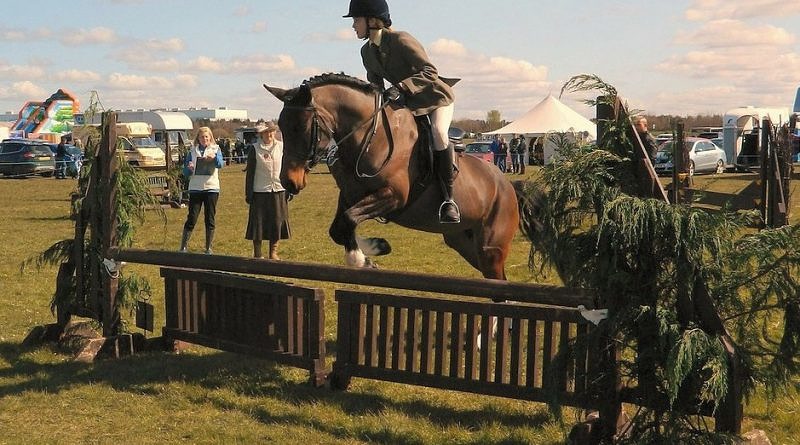Dressage for Jumping – Part 2
Are you a jumper who finds dressage boring? Learn how dressage principles can contribute to your performance over fences.
A lot of riders think training on the flat is frankly a little bit boring! Many would much rather go bombing about a course of jumps every ride! But if you want to be consistent over fences and have a willing, athletic equine partner, a little bit of dressage is key. The etymological origin of the word “dressage” is actually in the French word for “training” and in the simplest sense, it is the process of developing a horse – both mentally and physically – to master the ability to carry a rider.
As many a wise trainer has said, jumping is really just dressage over fences!
Developing balance
Carefully developing your horse physically can contribute to improved balance under saddle. Balance isn’t just important to prevent stumbles on landing or make it around tight turns, it’s also important for ensuring an even distribution of weight on take-off so that your horse has the ability to really launch themselves into the air. A horse that’s off-balance is going to really struggle to power over a fence and get their legs out of the way of the poles!
Balance, of course, isn’t something only the horse needs to develop. A balanced rider is important as well! Developing your own balance and also learning how your position and weight influence your horse are incredibly important. These skills are certainly challenging to teach! A rider can be told what to ‘do’ but ultimately needs to feel the effects for themselves to really appreciate how much influence it is possible to have on your horse in this seemingly subtle way.
Power comes from behind
Most horses need to be taught how to carry a rider. They are not born to do it! Part of this process is developing your horse’s ability to step under themselves, round over the back, engage, and use their hind end to push. This has fairly obvious benefits when jumping: a horse can’t jump by pulling themselves over a fence – it’s all about the thrust from the hind end.
Lateral work can help encourage more engagement to strengthen relevant muscles and build a powerful athlete. Horses should be encouraged to round over the back instead of travelling hollow. Being ridden hollow all the time can have serious health repercussions, including increasing the risk of developing kissing spines and even leading to chronic lameness in some cases – a horse that stays round, stays sound!
Unfortunately, many riders think that a vertical head means that the rest of the horse is round. It’s important to learn to distinguish between roundness and a ‘false outline’ where the head is tucked in and the back remains hollow. A knowledgeable pair of eyes on the ground can be a huge benefit when it comes to this particular source of confusion.
Jumping itself can also help strengthen the appropriate muscles – but it’s a lot more difficult to be sure the horse is doing this ‘properly’ without working on the foundation for this on the flat first. Lazy jumping will only result in more lazy jumping.
It is important that the horse isn’t permitted to be ‘lazy’ in how they do their work on the flat either. Like us, they will choose the easy way out where possible and compensate for weaknesses in some parts of their body by using a different part as a ‘crutch’. Just as we might be able to do several push-ups ‘our way’ but only a handful of ‘proper’ ones, so a horse needs to be encouraged by their coach – their rider – to do the exercise correctly in order to reap the benefits.
Getting off the forehand
An important consequence of being lighter in front is that the horse’s front end is freed up to improve acceleration, adjustability and manoeuvrability. When horses prepare for a burst of activity, you can see their bodies ‘bunch up’ almost like a coiled spring ready for action and to flee in any direction. This state of readiness can be partially replicated by teaching the horse to take more weight behind and has obvious applications for accurate jumping against the clock!
Continue to part 3 for more dressage for jumping.






